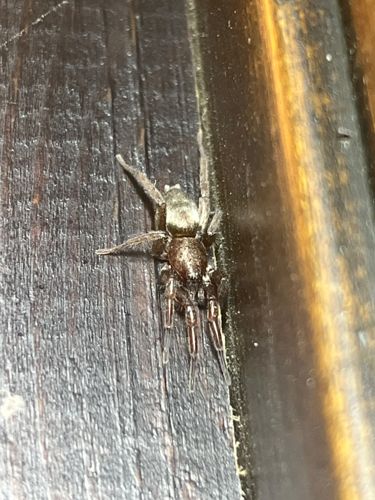Jumping spider
Scientific Name: Salticidae (family)
Order & Family: Araneae (order), Salticidae (family)
Size: Typically 1-25 mm (0.04-1 inch) in body length.

Natural Habitat
Widely distributed in diverse habitats including forests, grasslands, deserts, and human dwellings. Often found on vertical surfaces, foliage, or under rocks.
Diet & Feeding
Predatory; they hunt and feed on a variety of small insects and other arthropods. They do not build webs for catching prey, but rather stalk and pounce on their victims.
Behavior Patterns
Known for their excellent vision, typically having eight eyes, with large, forward-facing anterior median eyes that provide acute eyesight. They are active hunters during the day, using their vision to locate, stalk, and ambush prey. They can jump impressive distances relative to their size, aided by hydraulic pressure in their legs, which allows them to capture prey or escape danger. Many species exhibit complex courtship dances.
Risks & Benefits
Generally considered beneficial as they prey on various pest insects. They are not considered dangerous to humans; their venom is not medically significant, and bites are rare and typically only occur if they feel threatened. A bite might cause minor localized pain or swelling, similar to a bee sting. They pose no significant risks and contribute to natural pest control.
Identified on: 9/29/2025